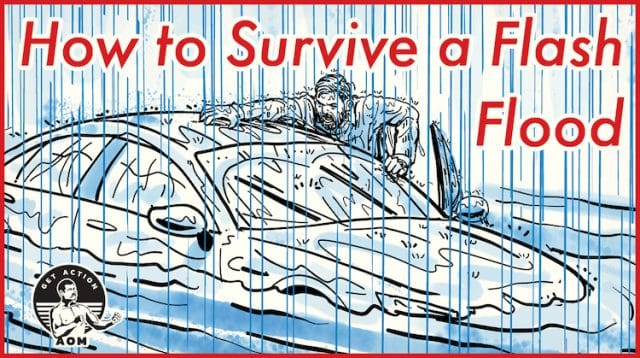A Practical Guide To Flash Flood Emergency Response And Prevention

Table of Contents
Understanding Flash Flood Risks and Prediction
Identifying High-Risk Areas
Geographical factors significantly influence flash flood risk. Mountainous regions, areas with poor drainage systems, and those situated near rivers or streams are particularly vulnerable. Understanding these risk factors is crucial for effective flash flood prevention and response.
- Examples of high-risk areas: Areas with steep slopes, canyons, and dry washes; regions with significant urbanization and inadequate drainage infrastructure; communities located near overflowing rivers or dams.
- Identifying high-risk zones: Utilize flood risk maps provided by government agencies like FEMA (in the US) or equivalent organizations in your country. These maps often delineate floodplains and areas with high flood probabilities. Consult local government websites and planning departments for additional information.
- Impact of urbanization and deforestation: Urban development often increases impervious surfaces (concrete, asphalt), leading to reduced water infiltration and increased runoff, thus exacerbating flash flood risks. Deforestation removes natural barriers that slow water flow, increasing the speed and volume of water during heavy rainfall.
Monitoring Weather Forecasts and Warnings
Staying informed about severe weather alerts is paramount to flash flood preparedness. Understanding the different types of alerts is key to taking timely action.
- Reliable sources for weather information: The National Weather Service (NWS) in the US, Environment Canada (in Canada), the Met Office (in the UK), and equivalent meteorological agencies worldwide provide accurate and timely weather forecasts and warnings. Many reliable weather apps also offer real-time alerts and localized information.
- Understanding alerts: A watch indicates that conditions are favorable for flash flooding. A warning signifies that flash flooding is imminent or already occurring. An advisory suggests that conditions are less severe but still warrant caution.
- Real-time flood monitoring: Numerous online tools and websites offer real-time flood monitoring data, showing current river levels and rainfall amounts. These resources can provide valuable insights into the developing situation.
Flash Flood Prevention Strategies
Home Protection Measures
Taking proactive steps to protect your home can significantly reduce the impact of a flash flood. Several measures can be implemented to safeguard your property and family.
- Home protection measures: Elevate electrical systems and appliances; install flood barriers (sandbags or commercially available barriers) around vulnerable areas; create a backup power source (generator); develop a detailed family evacuation plan including designated meeting points; and consider installing sump pumps.
- Flood insurance: Flood insurance is a crucial aspect of preparedness, protecting your home and belongings from financial losses. Contact your insurance provider to explore your options.
- Landscaping for improved drainage: Proper landscaping can significantly improve drainage around your home. Consider installing rain gardens, swales, and French drains to direct water away from your foundation.
Community-Level Prevention
Community-wide efforts play a vital role in mitigating flash flood risks. Collaboration between residents, local authorities, and emergency services is essential.
- Community-level prevention: Support initiatives for improving drainage infrastructure (storm sewers, culverts); advocate for land use planning that restricts development in high-risk areas; participate in community education programs to raise awareness about flash flood risks and preparedness.
- Cooperation is key: Effective flash flood prevention requires a collaborative approach. Local governments should implement stringent building codes and regulations in flood-prone areas. Community participation in cleanup efforts and preparedness initiatives is equally vital.
Flash Flood Emergency Response Procedures
Immediate Actions During a Flash Flood
When a flash flood warning is issued, swift and decisive action is crucial. Your safety is the top priority.
- Immediate actions: Move to higher ground immediately; avoid driving through floodwaters (even a few inches of water can sweep a vehicle away); disconnect electrical appliances to prevent electrical hazards; contact emergency services if necessary; and keep informed about the situation through official channels.
- Dangers of floodwaters: Floodwaters can be extremely dangerous, containing debris, strong currents, and hidden hazards. Electrical hazards are a significant concern, as floodwaters may be energized.
Post-Flood Safety and Recovery
After a flash flood, safety and recovery are paramount. Addressing the aftermath requires a systematic and cautious approach.
- Post-flood actions: Assess the damage to your property; contact your insurance company to report the damage; clean up safely, avoiding contact with contaminated water; properly dispose of hazardous waste (batteries, chemicals); and seek professional help for structural damage.
- Mental health support: Flash floods can cause significant emotional distress. Seek professional mental health support if needed.
Utilizing Technology for Flash Flood Preparedness
Flood Warning Apps and Systems
Technology plays a crucial role in flash flood preparedness. Several mobile apps and online systems provide real-time flood alerts and information.
- Helpful apps and websites: Many weather apps (e.g., AccuWeather, The Weather Channel) offer flash flood warnings and alerts. Government websites often provide real-time river level data and flood maps.
- Benefits of technology: Using these technologies significantly improves response time and allows for more proactive preparedness.
Social Media and Community Communication
Social media can be a powerful tool for disseminating crucial information during and after flash floods. However, verifying information is crucial.
- Effective social media use: Utilize social media to share real-time updates, relay information about safe routes, and offer assistance to those in need. Official sources of information should be prioritized.
- Combating misinformation: Be wary of unverified information circulating on social media. Rely on official government and emergency services sources for accurate updates.
Conclusion
Flash floods are a serious threat, but with proper preparation and response strategies, their impact can be significantly reduced. By understanding the risks, implementing prevention measures, and knowing how to react during an emergency, you can protect yourself, your family, and your community from the devastating consequences of a flash flood. Remember to regularly review your flash flood preparedness plan and stay informed about weather alerts. Proactive planning is key to effective flash flood emergency response and prevention. Develop your personalized flash flood plan today!

Featured Posts
-
 Alex Eala Targets Strong French Open Debut
May 25, 2025
Alex Eala Targets Strong French Open Debut
May 25, 2025 -
 Us China Trade Soars Ahead Of Trade Truce Deadline
May 25, 2025
Us China Trade Soars Ahead Of Trade Truce Deadline
May 25, 2025 -
 Garazh Ryazanova Plenum Tsenzura I Neozhidannaya Pomosch Brezhneva
May 25, 2025
Garazh Ryazanova Plenum Tsenzura I Neozhidannaya Pomosch Brezhneva
May 25, 2025 -
 Fathers Incredible Rowing Challenge Raising 2 2 Million For Sons Treatment
May 25, 2025
Fathers Incredible Rowing Challenge Raising 2 2 Million For Sons Treatment
May 25, 2025 -
 Listen Now Joy Crookes Drops New Song I Know You D Kill
May 25, 2025
Listen Now Joy Crookes Drops New Song I Know You D Kill
May 25, 2025
